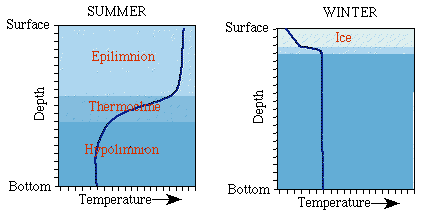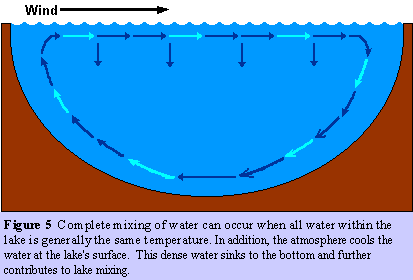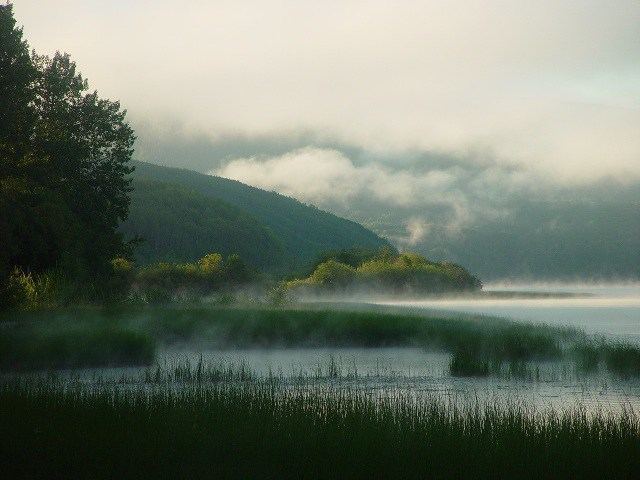 | ||
Limnology 101 lake stratification part 1
Lake stratification is the separation of lakes into three layers:
Contents
- Epilimnion: the top of the lake.
- Metalimnion (or thermocline): the middle layer, which may change depth throughout the day.
- Hypolimnion: the bottom layer.
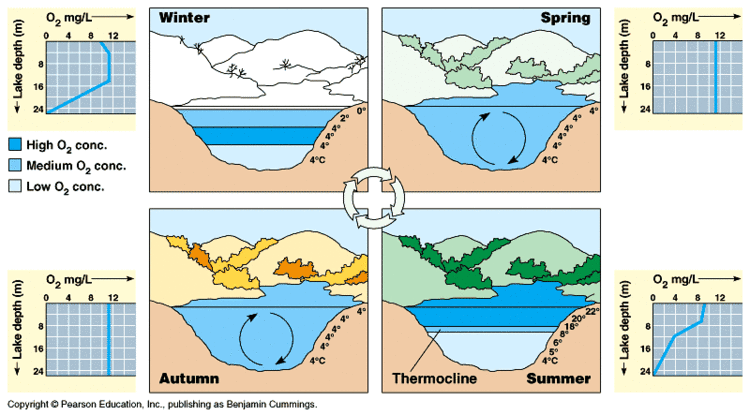
The thermal stratification of lakes refers to a change in the temperature at different depths in the lake, and is due to the change in water's density with temperature. Cold water is denser than warm water and the epilimnion generally consists of water that is not as dense as the water in the hypolimnion. However, the temperature of maximum density for freshwater is 4 °C. In temperate regions where lake water warms up and cools through the seasons, a cyclical pattern of overturn occurs that is repeated from year to year as the cold dense water at the top of the lake sinks. For example, in dimictic lakes the lake water turns over during the spring and the fall. This process occurs more slowly in deeper water and as a result, a thermal bar may form. If the stratification of water lasts for extended periods, the lake is meromictic. Conversely, for most of the time, the relatively shallower meres are unstratified; that is, the mere is considered all epilimnion.
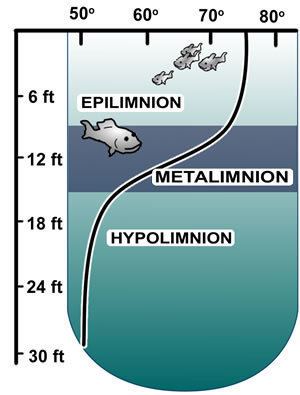
The accumulation of dissolved carbon dioxide in three meromictic lakes in Africa (Lake Nyos and Lake Monoun in Cameroon and Lake Kivu in Rwanda) is potentially dangerous because if one of these lakes is triggered into limnic eruption, a very large quantity of carbon dioxide can quickly leave the lake and displace the oxygen needed for life by people and animals in the surrounding area.
Natural resource and environmental managers are often challenged by problems caused by lake and pond thermal stratification. Fish die-offs have been directly associated with thermal gradients, stagnation, and ice cover. Excessive growth of plankton may limit the recreational use of lakes and the commercial use of lake water. With severe thermal stratification in a lake, the quality of drinking water also can be adversely affected. For fisheries managers, the spatial distribution of fish within a lake is often adversely affected by thermal stratification and in some cases may indirectly cause large die-offs of recreationally important fish. One commonly used tool to reduce the severity of these lake management problems is to eliminate or lesson thermal stratification through aeration. Many types of aeration equipment have been used to thermally destratify lakes. Aeration has met with some success, although it has rarely proved to be a panacea.
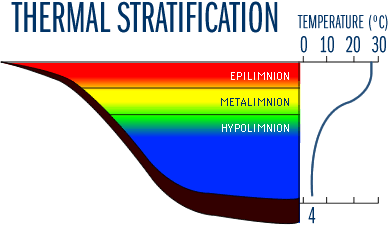
Lake stratification meaning
